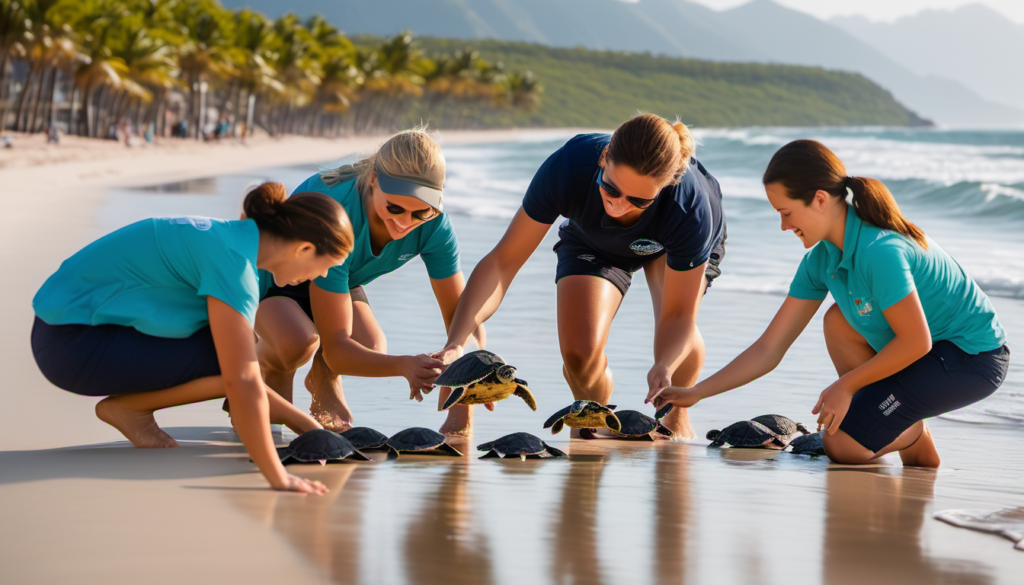Sea turtles are some of the most fascinating and endangered creatures on the planet. As their populations decline due to various threats, the need for conservation efforts has become more crucial than ever. Volunteer programs focused on sea turtle conservation provide individuals with the opportunity to make a direct impact in preserving these magnificent creatures and their habitats.
If you are passionate about marine life and want to contribute to the conservation of sea turtles, volunteering abroad in countries like Costa Rica, Mexico, or Sri Lanka can provide you with a rewarding and life-changing experience. These programs not only allow you to work closely with these incredible creatures but also provide a chance to immerse yourself in different cultures, meet like-minded individuals, and make a positive impact in local communities.

Why Sea Turtles?
Sea turtles play a vital role in marine ecosystems and have a profound impact on the health and balance of our oceans. Understanding the importance of sea turtles in ecosystems can further motivate individuals to get involved in their conservation.
Species of Sea Turtles
There are seven different species of sea turtles, each with its unique characteristics and habitats. These species include:
- Green Sea Turtles
- Loggerhead Sea Turtles
- Hawksbill Sea Turtles
- Leatherback Sea Turtles
- Olive Ridley Sea Turtles
- Kemp’s Ridley Sea Turtles
- Flatback Sea Turtles
Each species has its own conservation status, with some being critically endangered while others are listed as vulnerable or endangered.
Importance of Sea Turtles in Ecosystems
Sea turtles have a significant impact on the marine food chain and the overall health of the ocean ecosystem. Here are a few ways they contribute to the ecosystem:
- Maintaining Seagrass Beds: Sea turtles feed on seagrass, which helps maintain the health and productivity of seagrass beds. These beds are crucial for the survival of many marine species.
- Controlling Jellyfish Populations: Some species of sea turtles rely on jellyfish as their primary food source, helping to control jellyfish populations and preventing them from dominating other marine life.
- Transporting Nutrients: Sea turtles migrate over long distances, distributing nutrients like nitrogen and phosphorus across different habitats, contributing to the overall health of the ecosystem.
Threats and Challenges
Despite their importance, sea turtles face numerous threats that have led to a decline in their populations. Some of the main threats include:
- Habitat Destruction: Coastal development and pollution have resulted in the destruction of nesting beaches and feeding grounds for sea turtles.
- Illegal Harvesting: Sea turtles are often hunted for their meat, eggs, and shells, contributing to their decline.
- Climate Change: Rising temperatures and sea levels directly impact sea turtles and their habitats, affecting their reproductive success and survival.
- Marine Debris: Turtles can mistake plastic debris in the ocean as food and ingest it, leading to injury, illness, and even death.
Making a Difference
Volunteer programs focusing on sea turtle conservation aim to address these threats and challenges by actively working towards the preservation and protection of these endangered species. By participating in these programs, you can contribute to the conservation efforts in various ways.
Responsibilities and Activities
As a volunteer, you may be involved in different responsibilities and activities, such as:
- Nest Monitoring: Monitoring and protecting sea turtle nests from poaching and predators.
- Hatchling Releases: Assisting in the release of baby turtles into the ocean.
- Data Collection: Collecting and analyzing data on nesting behaviors, population dynamics, and other scientific research.
- Educational Outreach: Participating in educational workshops and community outreach programs to raise awareness about sea turtle conservation.
- Beach Clean-ups: Organizing and participating in beach clean-ups to remove marine debris that poses a threat to turtles and other marine life.
Understanding Sea Turtle Conservation Programs
Volunteering for sea turtle conservation programs allows you to actively engage in the protection and preservation of these magnificent creatures. By gaining hands-on experience and contributing to research and education initiatives, you can make a tangible difference in the fight against their decline.
Next, let’s explore the different locations where these programs are conducted, providing unique opportunities to work with sea turtles in their natural habitats.
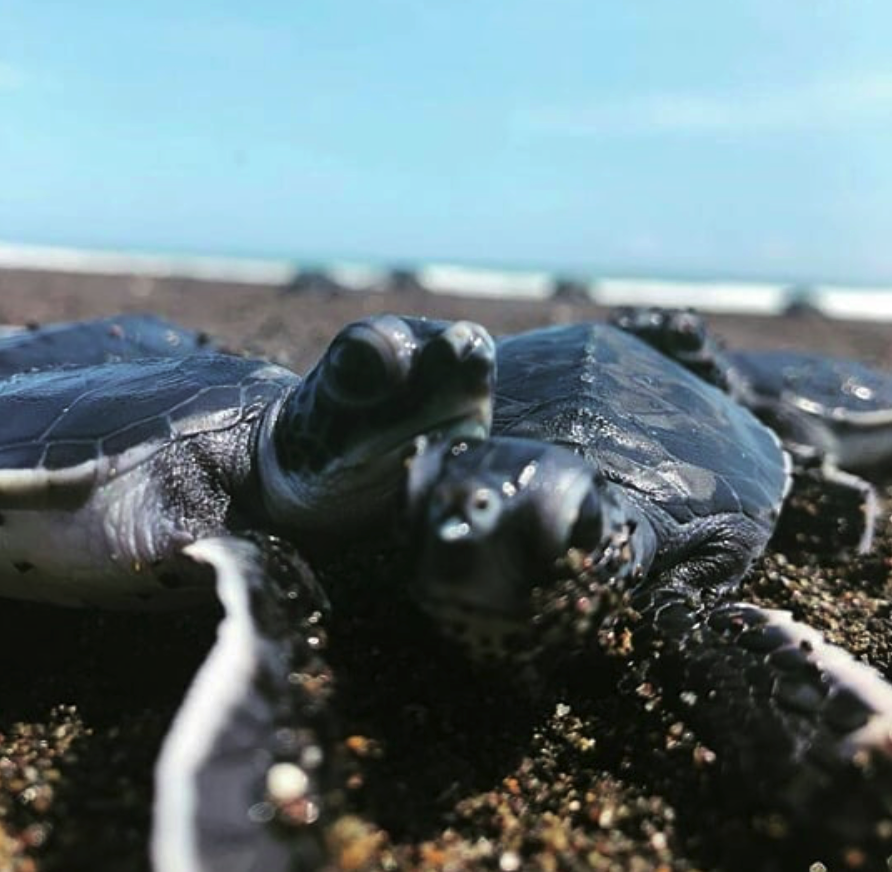
Program Locations
Volunteering abroad for sea turtle conservation is an incredible opportunity to make a difference in the lives of these magnificent creatures. If you’re passionate about marine life and want to contribute to their preservation, consider joining the sea turtle conservation programs offered by www.abroaderview.org in Costa Rica, Mexico, and Sri Lanka. Each location offers a unique experience and a chance to immerse yourself in the conservation efforts of these countries.
Costa Rica
Costa Rica is known for its rich biodiversity and stunning coastal landscapes, making it an ideal location for volunteering in sea turtle conservation. With both Pacific and Caribbean coastlines, Costa Rica provides nesting grounds for several species of sea turtles, including the Olive Ridley, Green, Leatherback, and Hawksbill turtles. As a volunteer, you will have the opportunity to work alongside local conservationists to protect nesting sites, monitor turtle populations, and assist with hatchling releases.
Mexico
Mexico is another fantastic destination for volunteering abroad in sea turtle conservation. With its beautiful beaches and warm waters, Mexico serves as vital nesting grounds for various species of sea turtles, including the Olive Ridley, Loggerhead, and Hawksbill turtles. As a volunteer in Mexico, you will assist in protecting and monitoring nesting sites, conducting research, and raising awareness among local communities about the importance of sea turtle conservation.
Sri Lanka
Sri Lanka, an island paradise in the Indian Ocean, is home to five different species of sea turtles, including the Olive Ridley, Loggerhead, Leatherback, Green, and Hawksbill turtles. The sea turtle conservation program in Sri Lanka offers volunteers an incredible opportunity to contribute to the protection of these endangered species. During your time as a volunteer, you will work alongside local organizations to monitor nesting activities, assist with beach clean-ups, and educate local communities about the importance of sea turtle conservation.
No matter which location you choose, each program provides a valuable and rewarding experience for volunteers. By joining one of these projects, you will have the opportunity to make a tangible impact on sea turtle populations while immersing yourself in the local culture and environment.
“Volunteering abroad in sea turtle conservation allows you to explore stunning coastal landscapes while making a difference in the lives of these majestic creatures. Each location offers unique opportunities to contribute to the preservation of sea turtles and the ecosystems they inhabit.”
Understanding Sea Turtles
Species of Sea Turtles
There are seven species of sea turtles, each with its own unique characteristics and habitat preferences. Let’s take a closer look at these incredible creatures:
- Green Turtles (Chelonia mydas): Known for their greenish fat, green turtles can be found in tropical and subtropical waters. They are herbivores, primarily feeding on seagrasses and algae.
- Loggerhead Turtles (Caretta caretta): Loggerhead turtles are named for their large heads and powerful jaws. They have a wide distribution and can be found in both temperate and tropical waters.
- Hawksbill Turtles (Eretmochelys imbricata): Hawksbill turtles have a beautiful, intricate pattern on their shells. They are critically endangered and primarily feed on sponges.
- Kemp’s Ridley Turtles (Lepidochelys kempii): Kemp’s Ridley turtles are the smallest and most critically endangered sea turtle species. They nest primarily on the Gulf Coast of Mexico.
- Olive Ridley Turtles (Lepidochelys olivacea): Olive Ridley turtles are known for their mass nesting events, known as arribadas. They can be found in warm waters around the world.
- Flatback Turtles (Natator depressus): Flatback turtles are found exclusively in the waters around Australia. They have a unique flat shell and are considered vulnerable.
- Leatherback Turtles (Dermochelys coriacea): Leatherback turtles are the largest of all sea turtles and are known for their unique soft shell. They have a wide distribution and can dive to incredible depths while foraging.

Importance of Sea Turtles in Ecosystems
Sea turtles have an integral role to play in maintaining the health of marine ecosystems. Here are some reasons why they are so vital:
- Control of Jellyfish Population: Sea turtles help control the population of jellyfish, which can become a nuisance in certain areas. They feed on jellyfish and keep their numbers in check.
- Seagrass Ecosystems: Green turtles are primary consumers of seagrass and help keep seagrass beds healthy. Seagrass meadows provide habitat for a variety of marine species and also act as carbon sinks.
- Beach Erosion Prevention: Sea turtles play a crucial role in beach ecosystems by digging nests and laying their eggs in the sand. The digging action helps aerate the sand and prevents beach erosion.
Threats and Challenges
Despite their importance, sea turtles face numerous threats and challenges that put their survival at risk. Some of these include:
- Habitat Loss: Human development and coastal construction destroy nesting sites and vital foraging areas for sea turtles.
- Entanglement in Fishing Gear: Sea turtles often become entangled in fishing lines and nets, leading to injuries and death.
- Pollution: Pollution, including plastic debris and chemical contaminants, poses a significant threat to sea turtles and the marine ecosystem as a whole.
- Climate Change: Rising sea levels and warming temperatures impact nesting beaches, egg incubation, and the availability of food for sea turtles.
- Illegal Wildlife Trade: Sea turtles and their eggs are often illegally harvested for their meat, shells, and eggs, putting additional pressure on already vulnerable populations.
Understanding the threats that sea turtles face is the first step toward conservation efforts. By raising awareness and taking action, we can ensure the survival of these magnificent creatures for future generations.
The Role of Volunteers
Are you passionate about wildlife conservation and interested in making a real impact? As a volunteer in a sea turtle conservation program, you can play a crucial role in protecting these beautiful creatures and their habitats. Here’s a closer look at the important duties and activities that volunteers undertake in these programs.
Responsibilities and Activities
Volunteers in sea turtle conservation programs are responsible for a range of activities that contribute to the protection and preservation of these ancient reptiles. These may include:
- Patrols and Monitoring: As a volunteer, you will participate in nightly beach patrols to monitor turtle nesting activities. This involves walking along the beach, keeping an eye out for nesting turtles, and recording data such as the species, location, and time of each nesting event.
- Egg Collection and Relocation: In some cases, it may be necessary to relocate sea turtle eggs to protected hatcheries to safeguard them from threats such as poaching or predation. Volunteers may assist in carefully excavating nests, collecting the eggs, and relocating them to safer areas.
- Tagging and Research: Volunteers often play a crucial role in scientific research efforts by tagging sea turtles. Tagging involves attaching identifying markers to the turtles’ shells, allowing researchers to track their movements, migration patterns, and population dynamics over time.
- Hatchling Release: When the time comes for the sea turtle hatchlings to make their way to the ocean, volunteers help ensure their safe journey. This may involve guiding the hatchlings towards the water, protecting them from predators, and educating local communities and tourists about the importance of not disturbing them.
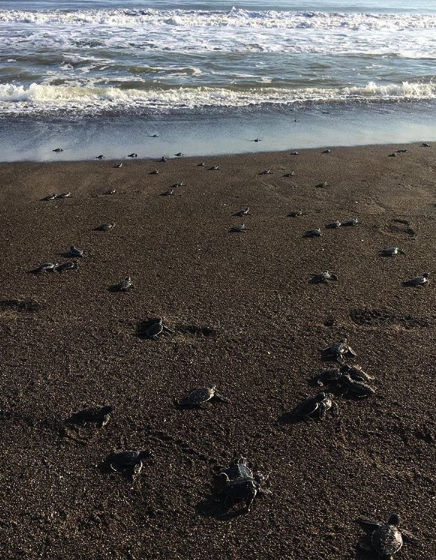
Monitoring and Research
Volunteers also contribute to ongoing monitoring and research efforts related to sea turtle conservation. This may involve:
- Data Collection: Volunteers assist researchers in collecting valuable data about sea turtle populations, nesting success rates, and other relevant factors. This data helps scientists better understand the health and status of sea turtle populations, which in turn informs conservation strategies.
- Nest Inventory: Volunteers may be involved in nest excavation and nest inventories, which involve carefully counting the number of eggs in each nest, determining the hatching success rate, and identifying any abnormalities or issues.
- Biodiversity Surveys: Volunteers may participate in biodiversity surveys, documenting not just sea turtles but also other wildlife and plant species found in the area. This information helps identify key habitats and potential threats to these ecosystems.
Nesting and Hatchling Conservation
Volunteers also contribute to the crucial task of nesting and hatchling conservation. This includes:
- Nest Protection: Volunteers help protect sea turtle nests from disturbances, such as unauthorized digging or predators. This may involve setting up barriers, monitoring nests for signs of disturbance, and educating locals and visitors on the importance of nest protection.
- Public Awareness and Education: Volunteers play a vital role in raising awareness about the conservation of sea turtles and their habitats. This could involve leading educational workshops, conducting beach clean-up campaigns, or participating in sustainable tourism initiatives that promote responsible behavior around nesting beaches.
- Nighttime observation: Volunteers often assist in nighttime observation shifts, during which they monitor nesting sea turtles or watch over hatchlings emerging from nests. This ensures their safety and helps researchers collect valuable data on nesting and hatching behaviors.
By actively participating in these roles and activities, volunteers make a tangible difference in the conservation of sea turtles and their ecosystems. Your dedication and passion can help ensure the survival of these incredible creatures for generations to come.
“Volunteers are the backbone of sea turtle conservation programs. Without their dedication and hard work, protecting these magnificent creatures would be much more challenging.”
Community Engagement
As a volunteer in a sea turtle conservation program, your impact goes beyond just protecting these beautiful creatures. One of the key aspects of these programs is community engagement. By actively involving local communities, these programs aim to create a sustainable approach to sea turtle conservation. Here are some ways in which volunteers like you can contribute to community engagement:
Educational Workshops
Volunteers play a crucial role in educating local communities about the importance of sea turtle conservation. Through workshops and presentations, you can help raise awareness about the threats faced by sea turtles and the role they play in maintaining the health of marine ecosystems. These educational sessions can also focus on teaching communities how they can contribute to conservation efforts by adopting sustainable practices.
Beach Clean-ups
Beach clean-ups are an important component of community engagement in sea turtle conservation programs. Volunteers work together with local community members to remove trash and debris from nesting beaches. This not only helps create a cleaner environment for sea turtles, but also shows local communities the impact of marine pollution on these vulnerable creatures. It is a great opportunity to unite everyone towards a common cause and inspire them to take better care of their surroundings.
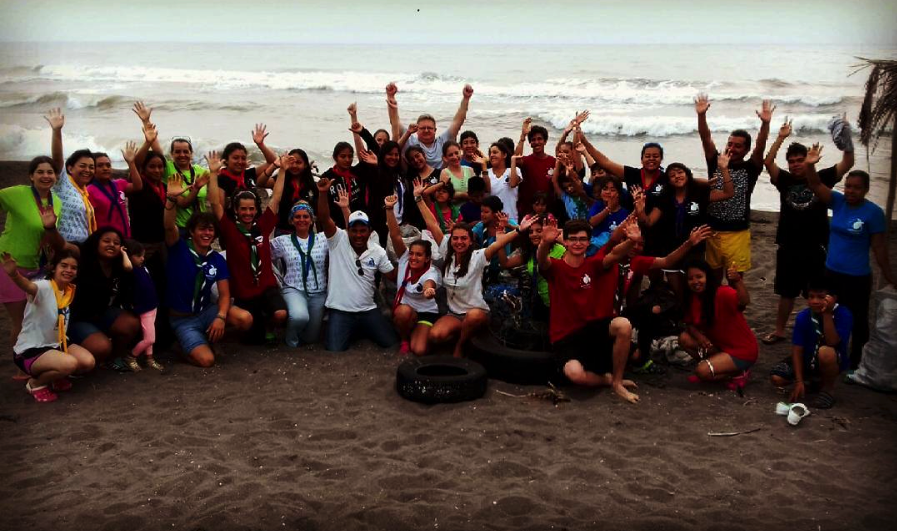
Sustainable Tourism Initiatives
Tourism can have both positive and negative effects on sea turtles and their habitats. Volunteer programs often aim to promote sustainable tourism practices that minimize the negative impacts on sea turtles. Volunteers can collaborate with local businesses and community members to develop eco-friendly tourism initiatives, such as responsible snorkeling and diving practices, beach conservation guidelines, and the promotion of turtle-friendly accommodations. By involving the community in these initiatives, volunteers help create a sense of ownership and responsibility among locals towards the protection of sea turtles.
Through these community engagement activities, volunteers not only contribute to the conservation of sea turtles but also foster a sense of environmental stewardship among local communities. This collaboration is key to creating long-lasting and effective conservation efforts.
“Community engagement is a vital component of sea turtle conservation programs. By involving local communities in the conservation efforts, we create a sense of ownership and responsibility towards protecting these magnificent creatures and their habitats.”
Program Requirements and Logistics
Before diving into the exciting world of sea turtle conservation programs, it’s important to understand the requirements and logistics involved. Here’s what you need to know before embarking on this incredible journey:
Volunteer Eligibility
Volunteer programs have certain requirements to ensure the safety and efficiency of the projects. While specific eligibility criteria may vary depending on the organization and location, here are some general requirements:
- Age: Most programs require volunteers to be at least 18 years old. However, some programs may accept participants as young as 16, provided they have parental consent.
- Physical Fitness: Sea turtle conservation programs can involve physically demanding activities, such as patrolling beaches, digging nests, and conducting research. Thus, volunteers should be in good physical health and capable of strenuous work.
- Language Skills: Depending on the program location, volunteers may be required to have a basic understanding of English or the local language. This is important for effective communication with the team and local community members.
Duration and Cost
Volunteer program durations can vary from a few weeks to several months. The length of your stay may depend on your availability and the program requirements. It’s important to determine how much time you can commit to the program before applying.
As for the cost, it’s essential to consider the program fees, which cover expenses such as accommodation, meals, transportation, and project support. The cost of volunteering abroad can vary depending on the location and organization, so it’s a good idea to research and compare different options.
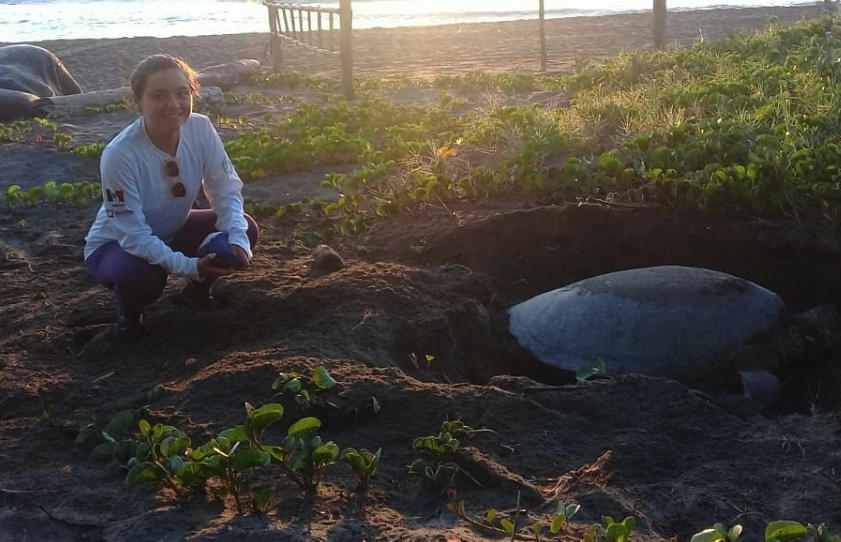
Accommodation and Meals
During your volunteer experience, you will be provided with accommodation and meals. However, the type of accommodation and the meals provided may vary depending on the program.
Accommodation options can range from shared volunteer houses to homestays. Living with other volunteers can create a sense of community and provide a great opportunity to make lasting friendships. Meanwhile, staying with a local host family can give you a deeper cultural immersion experience.
As for meals, most programs offer three meals a day, typically providing local cuisine. This is a fantastic chance to try traditional dishes and flavors of the region you are in. If you have any dietary restrictions or allergies, it’s important to communicate this to the program coordinators in advance.
Packing Essentials
As you prepare for your sea turtle conservation adventure, it’s important to pack the necessary essentials. Here are some items you should consider bringing:
- Lightweight and breathable clothing suitable for hot and humid weather
- Comfortable footwear for outdoor activities, such as walking on the beach and through the forest
- Insect repellent to protect yourself from mosquitoes and other bugs
- Sunscreen to shield your skin from the sun’s rays
- Reusable water bottle to stay hydrated
- Rain jacket or poncho for unexpected showers
- Hat and sunglasses for sun protection
- Snorkeling gear if the program includes marine conservation activities
Travel and Health Insurance
Before embarking on your volunteer experience, it’s important to have travel and health insurance coverage. This will provide you with financial protection in case of emergencies, such as accidents or illnesses.
Ensure that your insurance policy covers activities related to volunteering and provides adequate medical coverage. It’s always a good idea to carefully read the policy terms and conditions to understand the extent of your coverage.
By understanding the program requirements and logistics, you can make an informed decision and prepare yourself for a rewarding and impactful experience. So, get ready to make a difference in the world of sea turtle conservation!
Application and Training Process
The process of applying to volunteer abroad for a sea turtle conservation program is relatively straightforward. Here are the steps you will need to take:
Application Procedure
- Visit the website of the organization offering the volunteer program, such as www.abroaderview.org, and navigate to the page dedicated to the sea turtle conservation program.
- Fill out the online application form, providing your personal information, contact details, and preferred program location (Costa Rica, Mexico, or Sri Lanka).
- Upload any required documents, which may include a copy of your passport, CV or resume, and a letter of motivation.
- Pay the application fee, if required. This fee helps cover the administrative costs associated with processing your application.
Pre-departure Guidance
Once your application has been accepted, you will receive pre-departure guidance from the organization. This may include:
- Detailed information about the program, including specific project details, accommodations, and meals.
- Guidance on obtaining any necessary visas or vaccinations for your chosen destination.
- Tips and advice on how to prepare for your volunteering experience, such as packing lists and cultural etiquette.
- Travel resources and support, including assistance with booking flights and travel insurance.
On-site Orientation
When you arrive at your chosen program location, you will receive an on-site orientation to familiarize yourself with the project and the local community. The orientation may include the following:
- Introduction to the project team and fellow volunteers.
- Detailed explanation of your roles and responsibilities as a sea turtle conservation volunteer.
- Training sessions on how to collect data, monitor nests, and handle hatchlings (if applicable).
- Safety guidelines and protocols to ensure your well-being and that of the turtles.
The organization will provide you with all the necessary training and support to ensure you are confident and prepared for your volunteer work.
“The training and support provided during the orientation was excellent. I felt confident in my abilities and knew exactly what was expected of me as a volunteer.” – Sara, former volunteer
It’s important to note that prior experience in sea turtle conservation is not required to participate in these programs. All you need is a passion for wildlife conservation and a willingness to learn.
By following the application and training process, you will be well-prepared to make a meaningful contribution to sea turtle conservation and experience a life-changing adventure abroad.
Impact and Success Stories
Sea turtle conservation programs have been making a significant impact in protecting these endangered species and their habitats. Here are some success stories that highlight the positive outcomes and accomplishments of volunteer efforts in sea turtle conservation:
Conservation Achievements:
- Increase in Nesting: In many areas where sea turtle conservation programs have been implemented, there has been an increase in the number of nesting sea turtles. This indicates that the efforts to protect their nesting grounds and educate local communities are yielding positive results.
- Hatchling Survival: Through the dedication of volunteers, many sea turtle hatchlings have successfully made it to the ocean, increasing their chances of survival. By monitoring nests and protecting them from predators, volunteers play a crucial role in ensuring the next generation of sea turtles thrive.
- Research and Monitoring: Volunteers assist in collecting data on nesting patterns, migration routes, and population numbers. This information is essential for scientists and researchers to understand sea turtle behavior and implement effective conservation strategies.
Local Community Benefits:
- Economic Opportunities: Sea turtle conservation programs often collaborate with local communities, providing employment and income opportunities. For example, locals may be involved in ecotourism activities, such as guided tours or turtle watching, which creates sustainable economic benefits.
- Education and Awareness: Volunteers engage with local communities through educational workshops and awareness campaigns. By providing information on the importance of sea turtles and their ecosystems, they help foster a sense of environmental stewardship and promote sustainable practices.
- Preservation of Cultural Heritage: Many coastal communities have strong cultural and spiritual connections to sea turtles. By involving locals in conservation efforts, these programs help preserve traditional practices and beliefs that are integral to their identity.
Success Stories:
- In Costa Rica, where sea turtle conservation programs have been in place for several decades, the population of endangered green sea turtles has shown a significant increase. This success is attributed to the concerted efforts of volunteers, scientists, and local communities working together.
- In Mexico, the collaboration between sea turtle conservation organizations and local fishermen has resulted in the implementation of turtle-friendly fishing practices. By using nets with larger mesh sizes, sea turtles are less likely to become entangled, reducing unintentional mortalities.
- In Sri Lanka, volunteers have played a vital role in protecting sea turtle nesting sites from illegal egg collection and habitat destruction. As a result, nesting populations have rebounded, leading to a healthier marine ecosystem.
These success stories demonstrate the positive impact that volunteers can have on sea turtle conservation. By working hand in hand with local communities and organizations, these programs are making a real difference in protecting these magnificent creatures and their habitats.
“Volunteering in a sea turtle conservation program offers a unique opportunity to be part of these success stories and contribute to the preservation of these incredible marine species.”
Conclusion
Conclusion
In conclusion, volunteering abroad in sea turtle conservation programs is not only a rewarding experience but also a crucial step towards protecting these incredible creatures and their habitats. By taking part in these programs, you can make a positive impact on the environment and contribute to the preservation of sea turtle populations for future generations.
Through your efforts, you will have the opportunity to directly contribute to monitoring and research activities, nesting and hatchling conservation, and community engagement initiatives. By educating local communities and participating in beach clean-ups, you will help raise awareness about sustainable practices and the importance of conservation.
Not only will you be able to witness the incredible life cycle of sea turtles up close, but you will also have the chance to engage with local communities and gain a deeper understanding of the challenges they face in protecting these magnificent creatures. Your involvement will leave a lasting impact on both the environment and the community.
If you are passionate about conservation, love working with animals, and want to make a meaningful difference in the world, volunteering abroad in sea turtle conservation programs is the perfect opportunity for you. A Broader View Volunteers offers a variety of program locations, including Costa Rica, Mexico, and Sri Lanka, where you can embark on this incredible journey.
So why wait? Join A Broader View Volunteers today and become part of the global effort to protect and conserve sea turtles. Together, let’s work towards a future where these remarkable creatures thrive in their natural habitats.
Visit A Broader View Volunteers to learn more about their sea turtle conservation programs and other volunteer opportunities.
Frequently Asked Questions
- What countries offer sea turtle conservation volunteer programs?You can volunteer for sea turtle conservation programs in Costa Rica, Mexico, and Sri Lanka through abroaderview.org.
- What is the duration of the volunteer programs?The duration of the volunteer programs vary depending on the country. It can range from 1 week to several months. The website abroaderview.org provides detailed information about the duration for each program.
- What tasks are involved in the sea turtle conservation volunteer programs?Volunteers in sea turtle conservation programs help with activities such as beach patrols, protecting nests, monitoring nesting patterns, collecting data, assisting in hatcheries, and educating local communities about the importance of sea turtle conservation.
- Are there any specific requirements to participate in the volunteer programs?While specific requirements may vary, most programs require volunteers to be at least 18 years old and have a basic understanding of English. Some programs may have additional requirements such as swimming ability or previous volunteering experience.
- Do I need prior experience in sea turtle conservation to volunteer?No prior experience is necessary to participate in the sea turtle conservation volunteer programs. Training and orientation will be provided on-site to ensure that volunteers have the necessary knowledge and skills to perform their tasks effectively.

